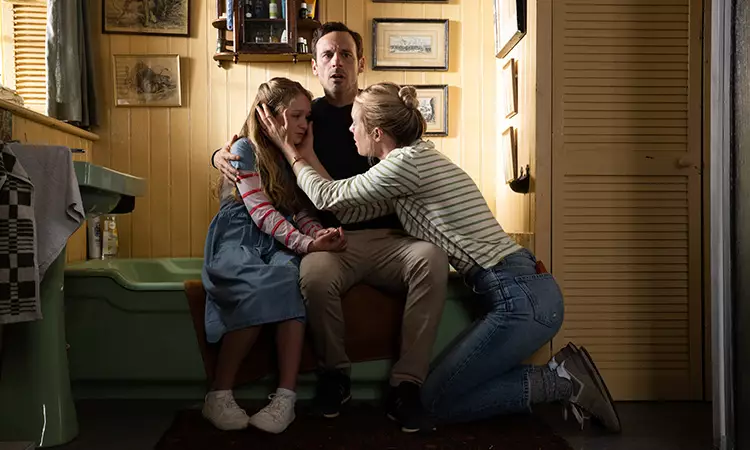“Speak No Evil,” a psychological thriller from the renowned Blumhouse production, dares to tread the uncomfortable waters of human interaction and societal norms. Scoot McNairy, who portrays Ben, encapsulates the film’s essence when he states that it plays with the delicate balance of politeness and the human tendency to shy away from discomfort. This analysis opens a captivating dialogue on how our inclination to adhere to social norms often masks deeper, more unsettling realities. Mackenzie Davis, who plays Louise, aptly describes the film’s tone as akin to “The Office” rather than traditional horror. Such a unique blend of dark humor and suspense serves not only as a narrative device but also as a reflection of our everyday lives, where awkwardness can sometimes overshadow authenticity.
The premise centers around an American family, the Daltons, who are lured by their idyllic holiday to the seemingly enchanting estate of a British couple, Paddy and Ciara, along with their quiet son, Antthey. The initial warmth of this encounter quickly devolves into a chilling narrative that examines the darker aspects of human nature and interpersonal relationships. The film artfully constructs a scenario that begins with familiar, relatable experiences—such as friendship and family bonding—before contorting those moments into a psychological quagmire. The transition from comfort to terror serves as a poignant reminder of the unpredictability of human behavior and relationships.
“Speak No Evil” does more than just deliver thrills; it also serves as a commentary on critical social themes such as class discrepancy, manipulation, and the complexities of gender roles. McNairy’s insights into toxic masculinity reveal a deep-seated critique embedded in the characters’ dynamics. His character, Ben, represents a more sensitive approach to masculinity, contrasting starkly with Paddy’s more aggressive demeanor. This conflict reflects a nuanced examination of modern masculinity, especially in a world where traditional roles are continuously evolving.
Davis emphasizes how the turmoil in Ben and Louise’s marriage impacts their decision-making process throughout the film. She elucidates that the couple is in the throes of couples therapy, which only heightens their vulnerabilities and influences their seemingly inexplicable choices. This layer adds a compelling depth to the narrative, illustrating how personal crises might push individuals into situations that defy common sense. It skillfully portrays the thin line between seeking connection and jeopardizing safety, making the audience question their own comfort zones.
One of McNairy’s more profound observations is the shift in societal fears—away from external threats to internal anxieties. In a world dominated by digital connectivity and social media, our fears often become introspective, tied closely to our self-image and subjective experiences. The film capitalizes on this introspection, utilizing the framework of the thriller genre to critique the societal anxieties faced by contemporary viewers. The youth, in particular, are often caught in this web of fears, making “Speak No Evil” not just a film but a commentary on a generation’s internal struggles.
Davis expands on this notion, suggesting that the familiarity of horror tropes offers filmmakers a unique opportunity to explore more profound societal issues without becoming overly didactic. The engaging structure of a horror narrative allows audiences to “consume” complex themes in a manner that feels organic and entertaining. This blend of psychological depth with visceral thrills creates a rich tapestry for audiences, sparking engagement with themes that might otherwise seem heavy-handed in a straightforward drama.
As “Speak No Evil” unfolds, viewers are thrust into a whirlpool of emotions ranging from suspense to unease. McNairy expresses hope that the film leaves audiences “scared out of their minds,” a goal that aligns with Blumhouse’s reputation for producing memorable horror experiences. However, beyond mere horror, what lingers is the discomfort and contemplation of the social themes at play.
In sum, “Speak No Evil” is not merely a horror film; it is an exploration of the discomfort that permeates modern society. It uses psychological tension and character dynamics to provoke thought about interpersonal boundaries, societal constructs, and the essence of true human connection. Through its unsettling narrative and complex characters, the film invites viewers to reflect on their discomforts and fears, making it a thrilling yet deeply insightful cinematic experience.

